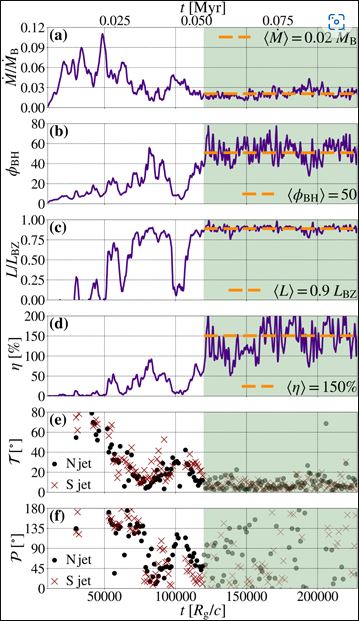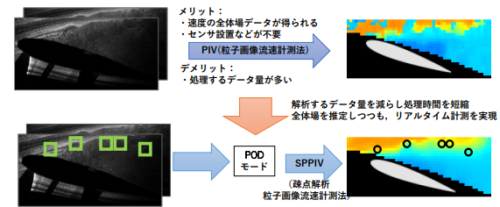簡単なシミュレーションで、偶然にもX型の銀河を初めて発見 Simple simulation accidentally leads to X-shaped galaxy for first time
2022-08-29 ワシントン大学セントルイス
<関連情報>
- https://news.northwestern.edu/stories/2022/08/x-shaped-radio-galaxies-might-form-more-simply-than-expected/
- https://iopscience.iop.org/article/10.3847/2041-8213/ac7bed
ボンダイとイベントホライゾンスケールをつなぐ:3次元GRMHDシミュレーションが明らかにするX型電波銀河の形態 Bridging the Bondi and Event Horizon Scales: 3D GRMHD Simulations Reveal X-shaped Radio Galaxy Morphology
Aretaios Lalakos, Ore Gottlieb, Nicholas Kaaz, Koushik Chatterjee, Matthew Liska, Ian M. Christie, Alexander Tchekhovskoy, Irina Zhuravleva, and Elena Nokhrina
Astrophysical Journal Letters Published 2022 August 29
DOI:https://doi.org/10.3847/2041-8213/ac7bed

Abstract
X-shaped radio galaxies (XRGs) produce misaligned X-shaped jet pairs and make up ≲10% of radio galaxies. XRGs are thought to emerge in galaxies featuring a binary supermassive black hole (SMBH), SMBH merger, or large-scale ambient medium asymmetry. We demonstrate that XRG morphology can naturally form without such special, preexisting conditions. Our 3D general-relativistic magnetohydrodynamic (GRMHD) simulation for the first time follows magnetized rotating gas from outside the SMBH sphere of influence of radius RB to the SMBH of gravitational radius Rg at the largest scale separation, RB/Rg = 103, to date. Initially, our axisymmetric system of constant-density hot gas contains a weak vertical magnetic field and rotates in the equatorial plane of a rapidly spinning SMBH. We seed the gas with small-scale 2% level pressure perturbations. Infalling gas forms an accretion disk, and the SMBH launches relativistically magnetized collimated jets reaching well outside RB. Under the pressure of the infalling gas, the jets intermittently turn on and off, erratically wobble, and inflate pairs of cavities in different directions, resembling an X-shaped jet morphology. Synthetic X-ray images reveal multiple pairs of jet-powered shocks and cavities. Large-scale magnetic flux accumulates on the SMBH, becomes dynamically important, and leads to a magnetically arrested disk state. The SMBH accretes at 2% of the Bondi rate ( for M87*) and launches twin jets at η = 150% efficiency. These jets are powerful enough (Pjets ≃ 2 × 1044 erg s−1) to escape along the SMBH spin axis and end the short-lived intermittent jet state, whose transient nature can account for the rarity of XRGs.
for M87*) and launches twin jets at η = 150% efficiency. These jets are powerful enough (Pjets ≃ 2 × 1044 erg s−1) to escape along the SMBH spin axis and end the short-lived intermittent jet state, whose transient nature can account for the rarity of XRGs.




新しいシミュレーションを用いて、超巨大ブラックホールの供給と、そのジェットと降着円盤の有機的な形成をモデル化するために、単純な条件を実装した。研究者らがシミュレーションを行ったところ、この単純な条件が、予想に反して有機的にX型の電波銀河の形成につながった。
この銀河の特徴であるX字型は、ジェットとブラックホールに流れ込むガスとの相互作用によってもたらされたことがわかった。